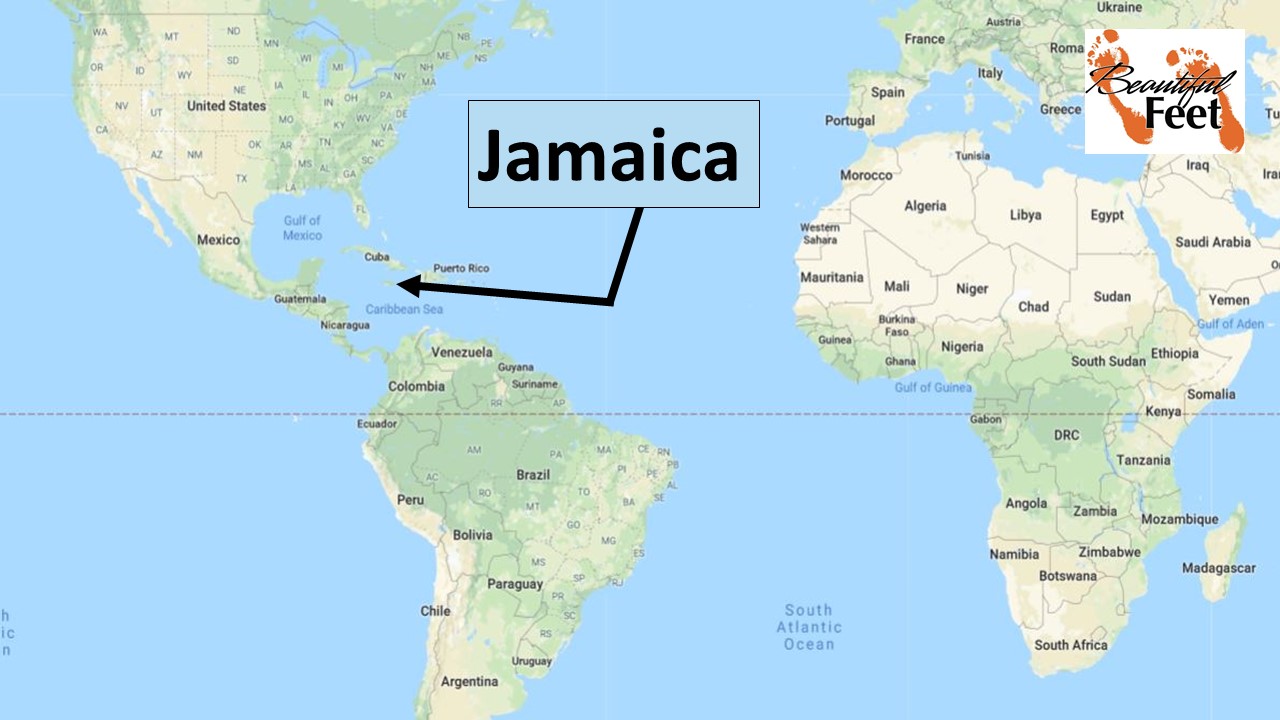 Introduction
Introduction
Attendance at churches in Jamaica suffered a horrific decline following the emancipation of slaves in 1838. From 1838 till the start of the revival in 1860, attendance in Baptist churches alone dropped from 40,000 to 20,000.
Extraordinary Prayer
When the news about the 1857 Fulton Street Prayer Revival (New York) reached Jamaica, believers across the island began desiring the same for themselves.
With Jamaica having a large agricultural workforce, they were not able to follow the New York pattern of noontime prayer, so to compensate, all across the island early morning prayer was organized at the plantations, where believers would pray before going out into the fields.
As the Christians persisted in prayer, a heightened expectation of a near revival was gripping the Jamaican church. By 1860, most believed that the much sought for revival would appear before the year’s end, but none expected the deluge of power that was soon to descend upon them.
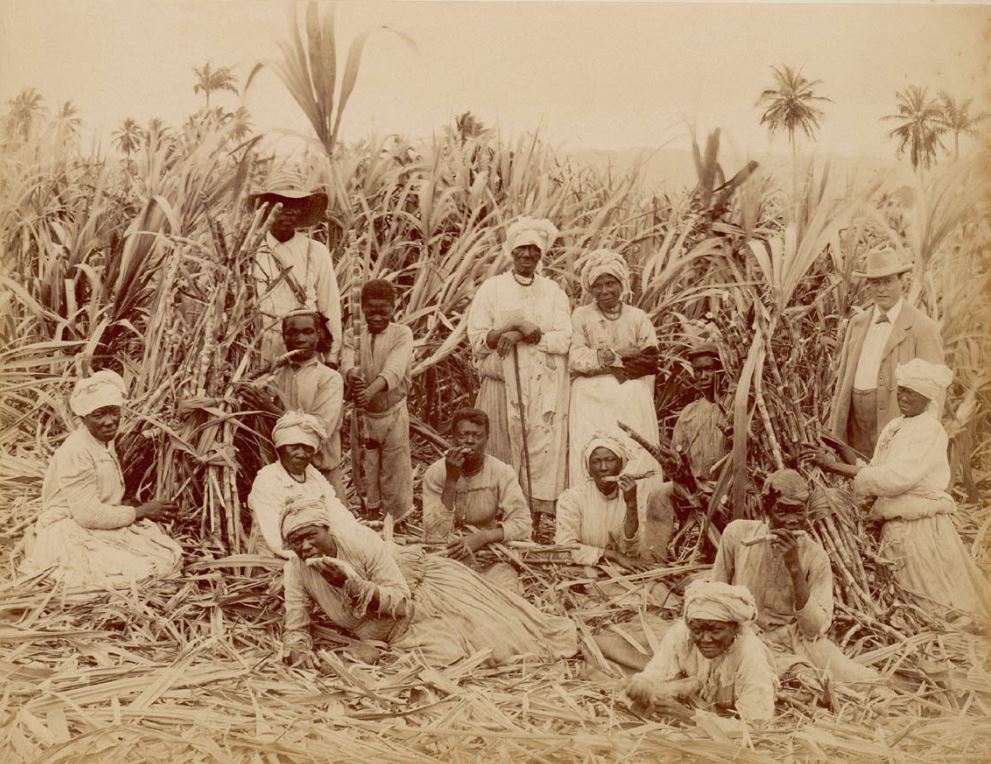
Sugar Cane Workers
What Happened
The revival started in September of 1860, at a Moravian chapel in the St. Elizabeth Parish. It soon spread across the entire island, impacting every denomination.
From the journal of Rev. Theodor Sonderman we get a glimpse into how the revival began. Sonderman wrote that as he was visiting Clifton, he met a large group of people, with some of them weeping due to the tremendous joy they were experiencing. Others were weeping due to the tremendous conviction of sin that was pressing down upon them. Then there were others that were perplexed at what they were witnessing.
Sonderman attempted to calm the emotions that were being expressed, but as he began praying, he himself was overcome with emotions, and cautiously stepped back, deciding to “leave them to the direction of the Holy Spirit.”
On Friday, September 28, 1860, a meeting was begun with a hymn, an opening prayer, and then, in rapid succession, people would pray, one after the other. Children also participated in public prayers, and as one young boy was pouring out his soul, the power of God descended upon everyone present, causing their physical bodies to tremble.
Everywhere people were crying out for mercy, and some were uttering deep groans as God exposed the true conditions of their hearts.
Sonderman writes that while one young girl was praying with deep passion and fluency, the Holy Spirit came “like a rushing mighty wind.” At the same time grown men were seen bowing on their knees, trembling as if shaken by an invisible power.
The meeting that day continued till midnight, but those who were under severe conviction of sin left the church and reassembled at the school building to receive counsel from Sonderman.
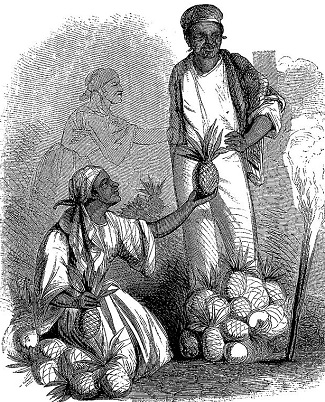
Selling pineapples in
the market
The Spreading Revival
Many Christians were wakened from their religious formalities in St. Elizabeth Parish. Many who were not yet Christians were overcome by the power of God and lost all physical strength to stand. (Daniel 8:16-18; 10:7-17)
The people had been praying for revival for several years, and after it arrived, many were filled with joy, but others were filled with fear, as some believers commented to their pastors:
Minister, we been praying for revival of religion, and now God pour out His Spirit, we are ‘fraid for it.’
A prayer meeting was held in a very difficult and resistant location, and during the service two young women were “struck down as though by lightning,” with one of them confessing the sins of her life. At the same time two young men were smitten with muteness and were “writhing in agony” (evidently under severe conviction of sin).
In just four weeks after the outbreak of the revival, the Rev. Theodor Sonderman had counseled with 315 people who were desperately seeking relief from the overwhelming conviction of their sins.
God-Consciousness Covered Montego Bay
In early November 1860, a minister was travelling to Montego Bay to preach for a Sunday morning’s service, and upon his arrival he found that God was already at work there. Beginning at 5 o’clock on Saturday evening, there was a continual flow of people coming to the church seeking salvation of their souls. An overwhelming God-consciousness had settled upon the town. God was the subject of every conversation, whether it was in the home, the fields, along the ocean front, or in the marketplace. The town was filled with an unusual awareness of the presence of God.
Outpouring in Bethel Town
Following a Sunday service in Bethel Town, a missionary proposed a prayer meeting to be conducted early the next morning, and at dawn on Monday, five hundred people gathered for prayer. Following that, an announcement was given that a service would be held that evening, with the local pastor conducting it. Just when that evening service was about to end, the Holy Spirit was poured out, and a powerful revival commenced. The presence of God was so real during the service that nobody wanted to leave.
The missionary was notified as to what had transpired and he immediately hurried back on Wednesday evening, where he became a witness to some “unforgettable scenes.” One of those scenes involved no less than one hundred sinners simultaneously being overcome by the presence of God and, having lost all bodily strength to stand, were prostrated on the ground.
Another astounding occurrence was the announcement coming from dozens of couples who were “living in sin,” that they were applying for marriage.
Thousands Awakened at Mount Carey
At the Mount Carey chapel a local justice of the peace presided over the services, and a crowd of 1,200 had gathered by 11 a.m., with many standing outside the church building looking in the windows. Tremendous excitement was created when seven people were overcome by the power of God and were prostrated on the ground.
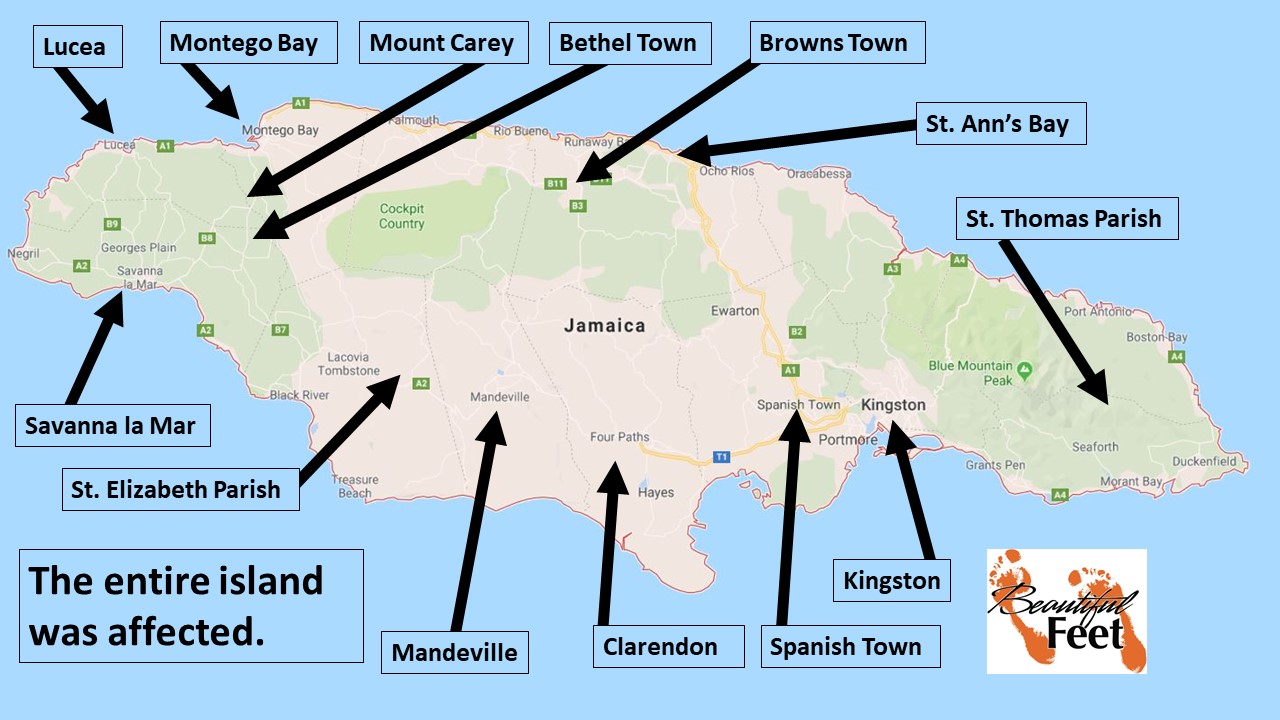
Some of the locations that were impacted by the revival.
The Revival Pervaded the Island
In the three previously mentioned locations, Montego Bay, Bethel Town, and Mount Carey, there were 3,000 conversions.
Scenes like what was witnessed at those locations were typical of what was taking place throughout the island. Massive crowds were overwhelmed by the presence and power of God. The mockers, who became the focus of the people’s prayers, were often drawn by an unseen and compelling power that led to their conversion.
Prayer seemed to play a prominent part of the revival. People who had just recently been converted to Christ were praying with such fluency that it seemed as if they had been doing it their entire lives. The prayer meetings were filled with an awareness of the presence of God that brought down conviction power upon those in the region, and with it an irresistible force that produced passionate repentance and genuine moral life transformation. In addition, the new converts were also filled with the compulsion to know, love, and serve Jesus.
Homes began to be used for public meeting places, where prayer and Bible reading took place. These homes where often packed with fifty to one hundred people at one time.
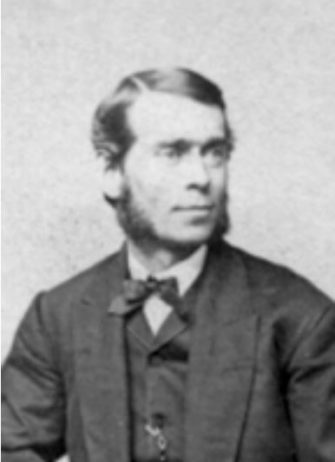
Thornton Bigelow Penfield
Missionary in Jamaica
View from a Missionary
On February 28, 1861, Thornton Bigelow Penfield, a missionary with the American Missionary Association, in a letter to his parents living in Oberlin, OH, wrote:
The revival has been spreading through a great portion of the island gradually and has now reached our side [eastern side, around Kingston]. It is astonishing to see how it pervades all classes of society.
In another of his letters, dated July 2, 1861, Penfield wrote,
We have had glorious times at Providence since the commencement of the revival. Our church there has just about doubled its numbers already and next Sabbath we are to receive twelve more, eight on profession of their faith and four by letter. The church as a whole has been greatly blessed and quickened in the divine course, and several of the backsliders have been reclaimed.
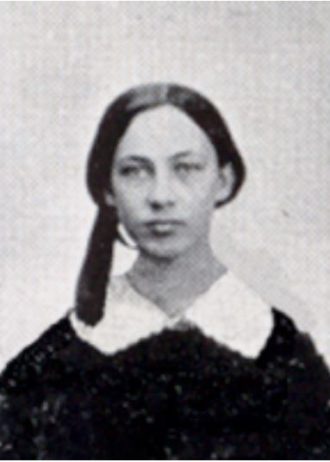
Sarah Penfield, wife of
T. B. Penfield
And a final comment from one of Penfield’s letters:
…during all the times of excitement my hands and mind were filled so that often I had no time to eat, and during the time that the excitement was at its height I lost as much as one night’s sleep out of every three or four.
Manifestations / Phenomena
Critics have always attacked genuine revivals and this one was no different. Some said there was excessive emotionalism that was being permitted. The Moravians, however, indicated that the emotions expressed were “no worse than those which occurred in England during the Evangelical Revival.” The Moravian missionaries also pointed out that the fruit which came from the revival proved that it was a genuine move of God, and that fruit was indisputable.
Types of Phenomena that Occurred (typical of most every revival)
People under severe conviction of sin responded to that conviction in a number of ways:
• They became deaf and mute (some for as long as two week).
• There were those who would scream in agony under the burden of their guilt.
• Some would experience “twitching,” “shaking of their limbs,” and “terrific bodily contortions.”
• Grown men were seen trembling as they kneeled, as if shaken by some invisible power.
• There were some who would go into a comatose state for several days, and after waking, they would tell of the visions they experienced during their unconsciousness.
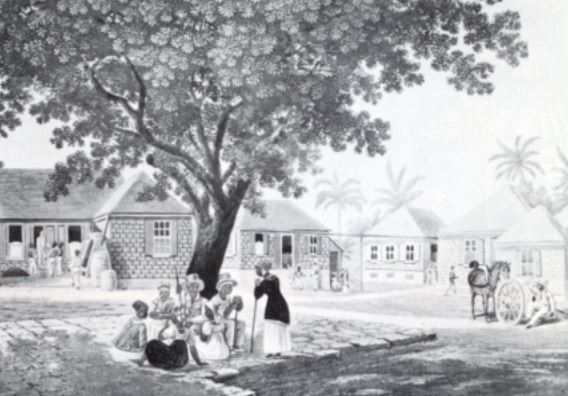
Typical Mission Station
Satanic Counterfeit Revival
As with every revival, Satan goes to work to discredit and undermine the true work of the Holy Spirit. This revival was no different. Much of the extreme emotions and wild behavior was undoubtedly demonic in origin, as there was still a considerable influence coming from the African tribal religions that were operating throughout the island.
As new converts were filled with a passion to tell of their newfound faith, they formed “evangelistic bands” which went from house to house, singing and sharing the gospel with everyone they met. These bands would at times be one hundred strong, and they multiplied throughout the island. Some of the missionaries were distressed over those bands, as the bands at times went into emotional extremes. (A cult eventually grew out of this revival, as African religions were mixed with Christianity. One of the cults today is called “Revival,” or “Revivalism.”)
Even with the extremes that emerged, all reported that “the revival brought a permanent improvement to church and society.”
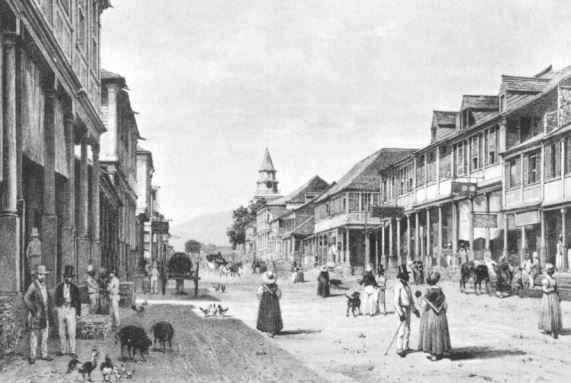
King Street, Kingston, Jamaica
The Results of the Revival
• Thousands were converted and baptized.
• New life filled the hearts of pastors.
• Wayward young people repented in large numbers. One missionary reported that more young people had joined the churches than what he had seen in 30 years.
• Backsliders returned to the church.
• There was an intense and mysterious drawing power that inclined almost the entire population on the island to hear the gospel.
• Bible sales jumped from the average of 4,700 Bibles per year, to 20,700 Bibles sold in 1860 and 1861.
• Every church was filled to capacity.
• A renewed generosity was recognized.
• Many became evangelists and missionaries to neighboring islands. Some even became missionaries to West Africa.
• Gambling houses were closed.
• Crime diminished.
• Some rum shops were closed and others were less frequented.
• The rowdy drunks on the streets were no longer seen.
• The traces of pagan religions originating from Africa declined in their influence.
• Many husbands and wives with marital problems were reconciled.
• A very large number of couples who were living together, unmarried, got married.
• The hostility of the unconverted toward Christians was very noticeable. Increased persecution is always evidence of a genuine work of the Holy Spirit.
• The overwhelming majority of those who came to Christ remained in the Church, with little backsliding reported.
• The morality of the nation underwent a dramatic transformation.
• The London Missionary Society’s Congregational churches had grown so strong that in 1867 they decided to pull their missionaries out of Jamaica, considering the island sufficiently evangelized. The churches were then left under the competent leadership of Jamaicans.
• Reports from the twenty-six churches associated with the United Presbyterian Church of Scotland were that attendance had reached a total of 10,420. This resulted in an average attendance of 400 people at each church.
• From the eighty Baptist churches (and their affiliates) across the island, reports were that there were 12,000 conversions—ending a 25-year decline in attendance.
• The Wesleyan Methodist Churches at Montego Bay, Lucea, and Brown’s Town, reported thousands of new members.
• In early 1863, Kingston Methodists reported the “holy fire was still burning, though the leaders were weary in well-doing.”
Sources
- Evangelical Awakenings in Latin America by J. Edwin Orr
- Letters from Jamaica edited by Charles G. Gosselink
- The 10 Greatest Revivals Ever by Elmer Towns
- The Event of the Century by J. Edwin Orr
Return to List of Revival Stories
Chet & Phyllis Swearingen
(260) 920-8248
romans1015@outlook.com
Beautiful Feet
P.O. Box 915
Auburn, IN 46706

